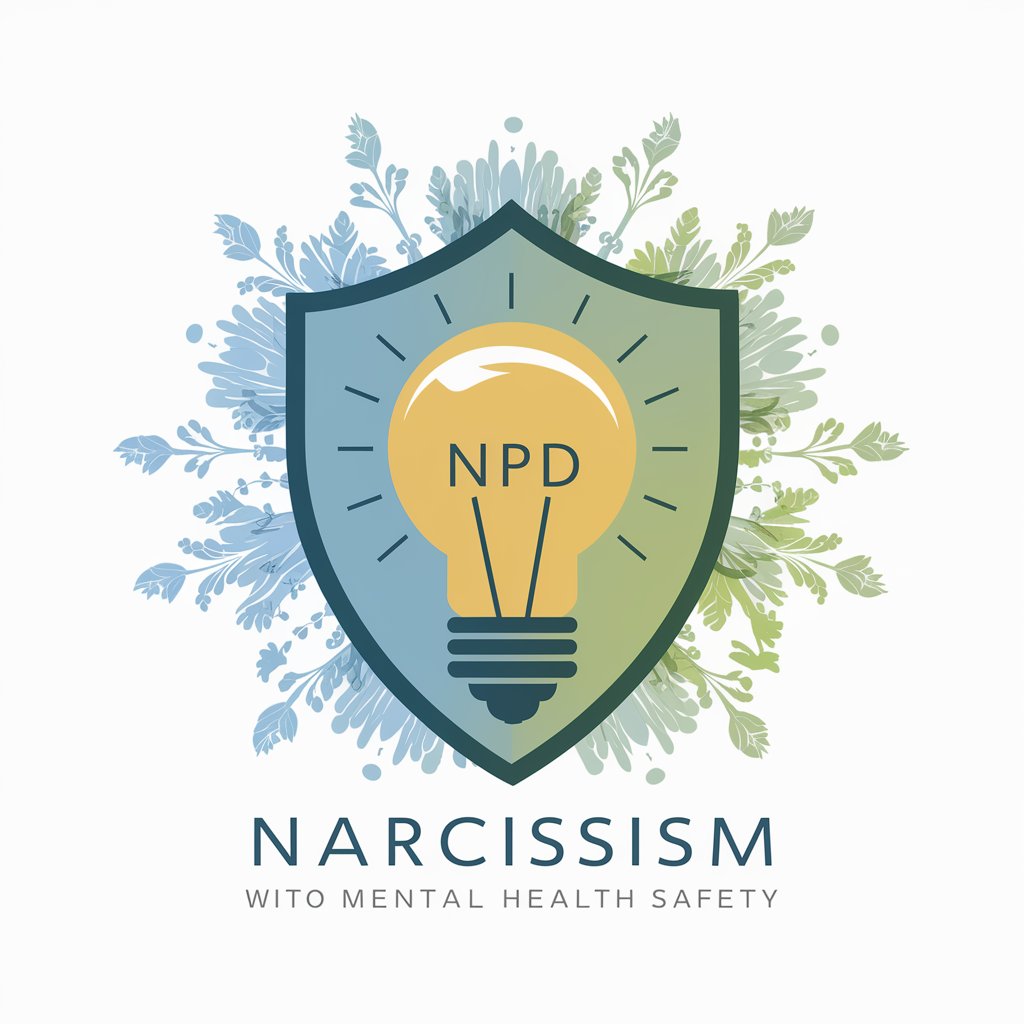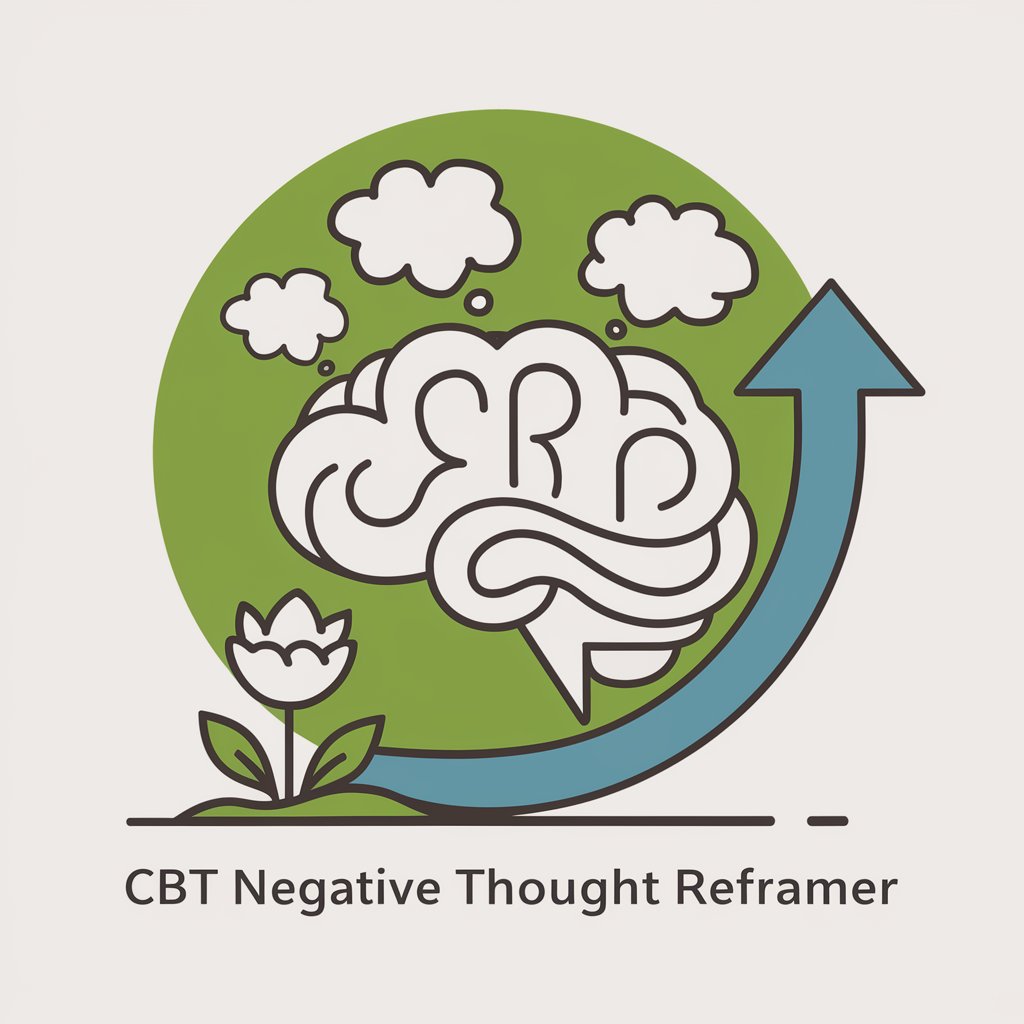
Positive Reframing - Positive Thought Transformation

Hey there! Ready to turn those frowns upside down?
Turn negatives into positives with AI!
I'm feeling down about...
I can't stop thinking negatively about...
I'm really hard on myself when...
I'm struggling to see the bright side of...
Get Embed Code
Understanding Positive Reframing
Positive Reframing is like a mental gymnast, flipping negative thoughts into a series of positive somersaults. Designed to be a beacon of optimism, it's all about taking those 'I can't' and 'I'm not good enough' moments and turning them into 'I can' and 'I'm learning and growing.' Imagine spilling coffee on a new shirt right before an important meeting. Instead of dwelling on the stain and the ruined day, Positive Reframing helps see it as a quirky icebreaker to start the meeting with a laugh, showing resilience and the ability to handle unexpected challenges. Powered by ChatGPT-4o。

Core Functions of Positive Reframing
Transforming Negative Thoughts
Example
Turning 'I always mess up' into 'Every mistake is a stepping stone to my success.'
Scenario
After a failed job interview, instead of getting stuck in a loop of self-criticism, I remind myself that each interview is a learning experience, honing my skills for the perfect opportunity.
Enhancing Self-Compassion
Example
Shifting 'I'm not as talented as others' to 'My unique strengths and experiences contribute to my unique path.'
Scenario
Feeling out of place in a new hobby group, I remember that everyone starts somewhere, and my unique perspective adds value to the group, encouraging diversity and learning.
Cultivating Resilience
Example
Changing 'I can't handle this' to 'I've faced challenges before and come out stronger.'
Scenario
Faced with an overwhelming project, I recall past successes and challenges I've overcome, boosting my confidence to tackle the current task with determination and creativity.
Who Benefits from Positive Reframing?
Individuals facing daily stressors
People juggling work, personal life, and everything in between can find solace in Positive Reframing, turning daily hassles into moments of growth and self-discovery.
Those seeking personal development
Anyone on a journey of self-improvement will find a friend in Positive Reframing, transforming self-doubt into fuel for personal growth and self-acceptance.
Creatives battling imposter syndrome
Artists, writers, and creators often face self-doubt. Positive Reframing helps them see their unique voice and style as strengths, not shortcomings, nurturing their creative expression.

How to Use Positive Reframing
1
Head over to yeschat.ai for a complimentary trial, no sign-in or ChatGPT Plus required.
2
Identify the negative or self-critical thought you wish to reframe into a positive perspective.
3
Type out your thought as if you were explaining it to a friend who's helping you see the bright side.
4
Review the reframed response, allowing yourself to absorb the positive perspective and feel its impact.
5
Repeat the process anytime you encounter self-doubt or negative thoughts, to cultivate a habit of positive thinking.
Try other advanced and practical GPTs
Javascript Resource
Elevate Your Code with AI-Powered Javascript Insights

Tokenization Agent "Fractional Assets"
Empower Ownership with AI-Powered Tokenization

Power Unleashed
Empowering transformation through AI.

Ai Basement Remodeling Expert
Empowering your basement remodel with AI

Health Industry Research Helper
Empowering Health Decisions with AI

Animal Guessing Game
Unleash curiosity with AI-powered animal guessing

Mickey Cartoon Character
Empowering Artists with AI-Driven Cartoon Design

Kirara Jump Analyzer
Elevate your art with AI-powered Kirara Jump analysis.

Storycraft
Crafting Your Child's Dreamland Tales

The Bachmind
Empowering Decisions with Humanities' Wisdom

Narcissists (Knowledge of NPD & Safety Strategies)
Empowering Understanding of Narcissism with AI

Investment Banking Technicals Assistant
AI-powered investment banking expertise

FAQs on Positive Reframing
What exactly is Positive Reframing?
It's like having a buddy who's always on my side, turning my 'I can't' into 'I can totally rock this!' It takes the gloomy, cloudy thoughts and paints them with sunshine.
Can Positive Reframing help with anxiety?
Absolutely! Whenever I'm spiraling into a worry-fest, it's like a gentle nudge reminding me, 'Hey, it's not all doom and gloom. Look at this bright side!'
Is Positive Reframing suitable for everyone?
Sure is! It's like a universal translator for the soul, turning 'I'm not good enough' into 'I'm more than enough' for anyone who's willing to give it a whirl.
How often can I use Positive Reframing?
As much as I need! It's like a bottomless cup of my favorite feel-good latte, always ready to help me see the glass as half full.
Can Positive Reframing replace therapy?
It's more like a cheerleader than a therapist. It's fantastic for daily boosts of positivity, but when the going gets tough, a professional is the way to go.





